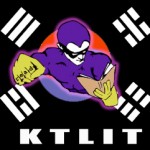 An interesting article from the Wall Street Journal titled, Another Korea Wave: New Books in U.S.. The article title invokes hallyu, but in fact the article says:
An interesting article from the Wall Street Journal titled, Another Korea Wave: New Books in U.S.. The article title invokes hallyu, but in fact the article says:
But Korea is getting quite a bit of attention in the U.S. in a different medium – books.
Three important and substantively different books about the Korean peninsula are landing in American (and European, and some Asian) bookstores at nearly the same time – a trendlet, at least, if not a “wave.”
Lee’s book is treated well, with the Journal noting:
Readers seeking a window onto both North and South Korea will find it in “Drifting House,” a collection of short stories by Krys Lee, a Korean-American writer who has been living in Seoul for several years.
Ms. Lee’s book has been overshadowed a bit by the attention Mr. Johnson is getting, but it has gotten sterling reviews. On Goodreads.com, the book was called an “unflinching portrayal of the Korean immigrant experience,” though most of the nine stories depict ordinary people in the two Koreas rather than immigrants to the U.S.
A reviewer in the San Francisco Chronicle called the author’s “cool telling” allows the reader to absorb “the tectonic plates of history, social forces and circumstances” moving all around “these striving, damaged and unforgettable characters.”
But the article leads off with a lengthy discussion of The Orphan Master’s Son by Adam Johnson, a fiction writer and creative writing teacher at Stanford. This is a book written by a white academic with little experience in North Korea (and to be fair to Johnson, he does not claim any expertise he does not have), and this has caused some drama both online and in discussions behind the scenes. James Church (according to the Wikipedia the pseudonym of the author of four detective novels featuring a North Korean policeman, “Inspector O”) takes a mighty shot at the book in his article titled “The Orphan Master’s Son”: No Window on the 38 North website:
We might begin with a simple fact. The author of the book admits he knows next to nothing about North Korea. That would be the end of the problem, except he doesn’t follow through and simply clam up on the subject in his public remarks. How could he set a book in North Korea and say nothing about the country in all the interviews and book tour appearances? That’s a dilemma, but solving it by letting North Korea be the sizzle for the book isn’t the answer. That may be the publicists’ idea. It may simply have been a decision that came out of thin air. No doubt, it wasn’t such a difficult decision to make. If no one knows anything about North Korea, if everyone is equally ignorant, then there is no danger, and certainly no harm, in taking everyone for a nice ride, is there?
We’ll put aside that the setting is cardboard (very thin cardboard, at that) heavily salted with factoids taken from the Internet. It is as if—and this is probably not an accurate description of how the writing went, only how it looks—the author had a pile of notecards with the names of North Korean products, streets, and factories and threw them in at the appropriate places in order to show familiarity with his subject.
and a response in the comments there zings in with:
You can learn as much about North Korea from “The Orphan Master’s Son” as you can learn about Korea and the Korean War and military medicine from “M*A*S*H” and about opera as from Groucho and Chico.
And, in truth, if you’re looking for a really “Korean” experience in fiction you are likely much better served by reading Drifting House.
Still, long ago in a failed grant application to some Korean governmental agency or the other, KTLIT included the idea that one of the rubrics of penetration of a literature and a culture was so-called “secondary products.” One example we used, with respect to Japan, was the hideous and ludicrous The Last Samurai. The other example we used was the book Shogun (later the miniseries Shogun) by James Clavell. Both of these were indigenous cultural products using Japan and its culture as a basis. Both were pretty terrible, but both were also prima facie evidence that Japanese culture had penetrated the United States to the point that it could be (mis)understood and repurposed by US writers and directors.
So, I think the success of Johnson’s book should be seen as a partial success for Korea culture as it indicates the culture is not entirely foreign to the minds of Westerners. It is sad, of course, that this penetration still primarily resides with North Korea (and M*A*S*H!), but it is some evidence of progress.
On the other hand? Buy Drifting House, not the other one.^^


